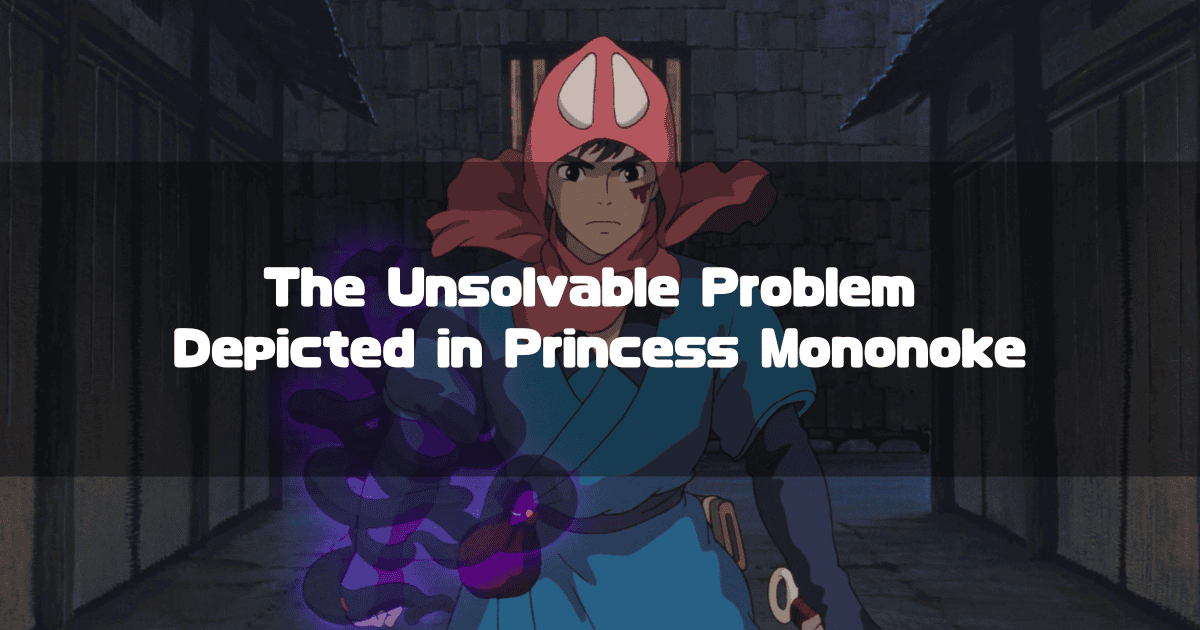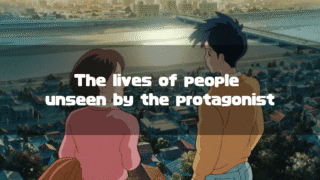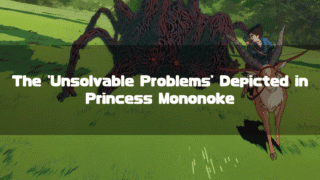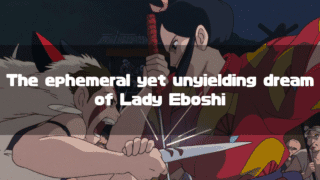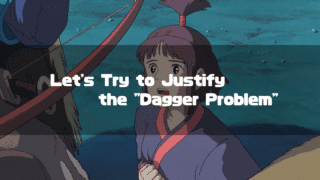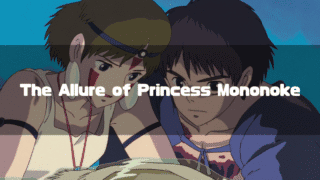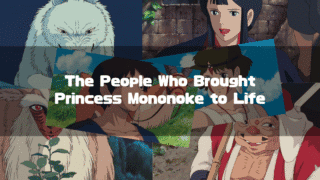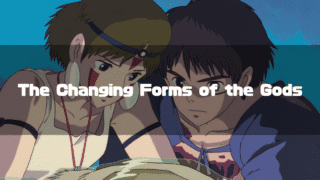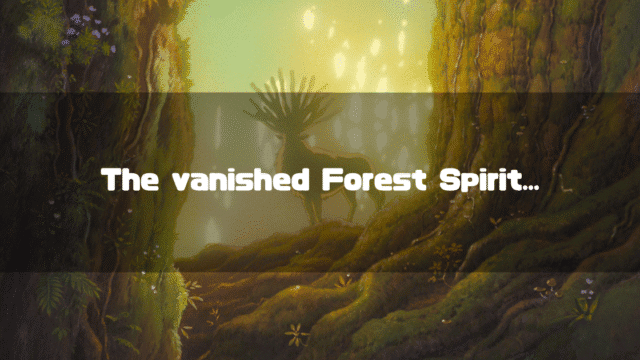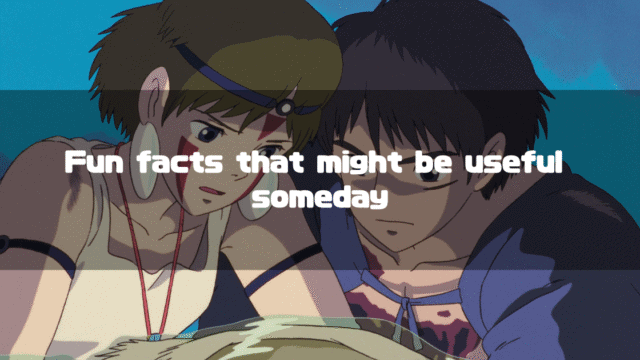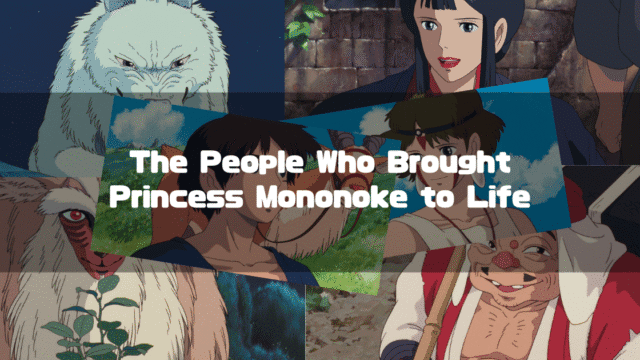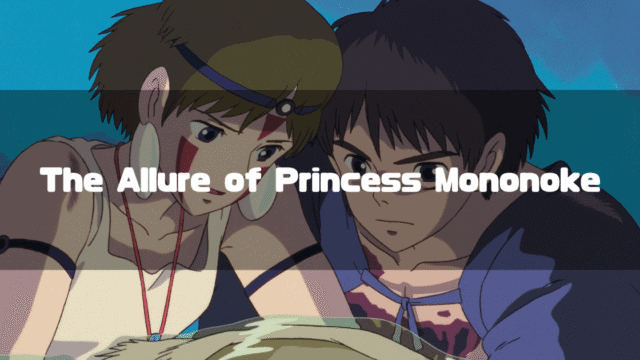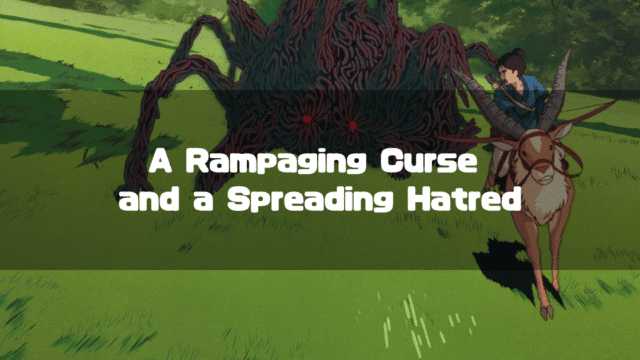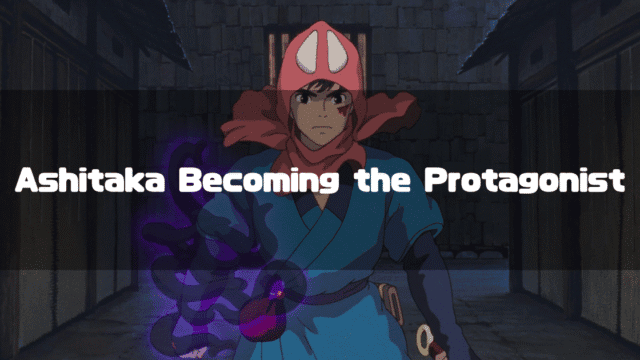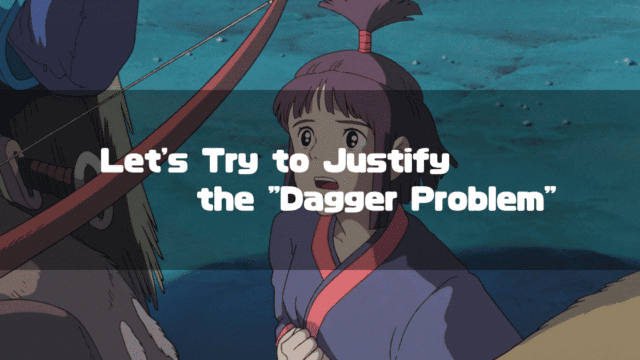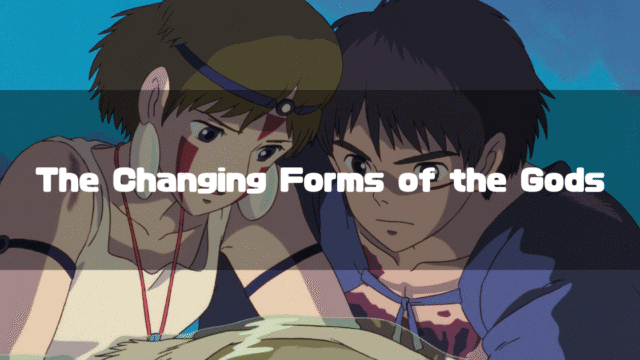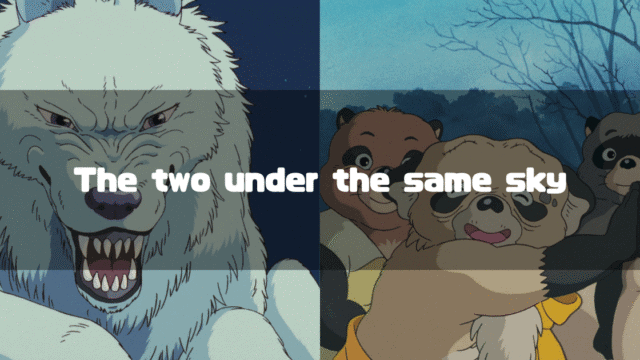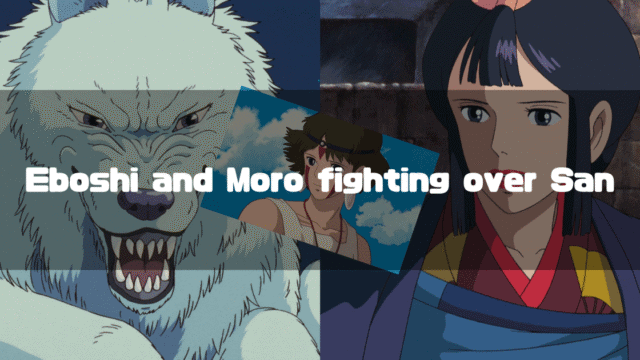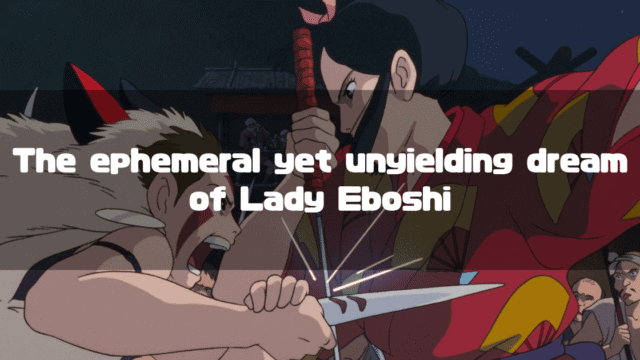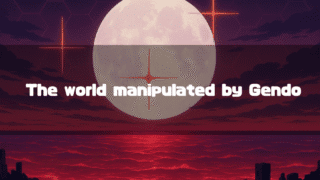Princess Mononoke(Studio Ghibli Official) is a 1997 animated film directed by Hayao Miyazaki. As for Studio Ghibli’s theatrical releases, they had released Pom Poko (directed by Isao Takahata) in 1994 and Whisper of the Heart (directed by Yoshifumi Kondō) in 1995, with the TV anime “Ocean Waves” airing in 1993. On the other hand, five years had passed since director Hayao Miyazaki’s last film, Porco Rosso, in 1992, making it a long-awaited work for fans.
Meanwhile, Neon Genesis Evangelion was a TV anime series directed by Hideaki Anno that aired in 1995, but in 1997, the movie version The End of Evangelion was released. While the tagline for Princess Mononoke was “Live.”, one of Evangelion’s taglines was “So, everyone should just die…” (What a contrast!).
This time, while comparing Princess Mononoke and Neon Genesis Evangelion, I would like to consider the reason why the background of the end credits in Princess Mononoke is completely black. What meaning could that background hold?
*This article is an English translation of the original Japanese article, 映画「もののけ姫」のエンドロールの背景はなぜ真っ暗なのか-エヴァンゲリオ.
Let an AI walk you through the highlights of this post in a simple, conversational style.
- Characteristics of Princess Mononoke’s End Credits
The end credits of Princess Mononoke are distinct for being completely black, with no video or still images. This differs from Miyazaki’s previous works and represents a new approach tailored to the film’s content. - The Shared Fate of Ashitaka and the People of Irontown
Ashitaka is depicted as a person who is “told he is not needed,” and similarly, the people of Irontown are shown in the story as those who have “drawn the short straw.” Their sense of entrapment and suffering shapes the narrative. - An Unsolvable Problem and Documentary-like Nature
Princess Mononoke is a work that depicts an unsolvable problem. Therefore, it cannot reach a clear resolution typical of entertainment and takes on a documentary-like aspect. This is visually expressed by the black background of the end credits. - Miyazaki’s Expression of Hope Through a “Small Lie”
At the end, Miyazaki depicts a “conscious step forward” where the characters acknowledge the “problems caused by their own actions,” offering a small bit of hope. By telling this “small lie,” he maintains the documentary-like nature while still showing hope in the film.
The End Credits of Princess Mononoke
Unlike Hayao Miyazaki’s previous works, the end credits of Princess Mononoke have a completely black background, with no video or still images. So, what were the end credits of his earlier films like?
- The Castle of Cagliostro fades to black with the words “The End.”
- Nausicaä of the Valley of the Wind features an animation depicting the story’s aftermath.
- Castle in the Sky shows Laputa watching over the Earth.
- My Neighbor Totoro shows still images of Mei and Satsuki’s life afterward.
- Kiki’s Delivery Service features an animation showing the town and the subsequent lives of Kiki and Tombo.
- Porco Rosso depicts the lives of those who took to the skies, with their pig faces, in a photo-like sequence.
As you can see, there had never been complete darkness before, and this can be considered a noteworthy characteristic of Princess Mononoke.
The People in Princess Mononoke
To consider the “black credits problem,” I believe it’s necessary to delve into the content of the film. However, since this work has many facets, it’s a bit difficult to discuss its content all at once. Therefore, I will base my thoughts on the following comment by director Hayao Miyazaki, found in the documentary How Princess Mononoke Was Born (「もののけ姫」はこうして生まれた, in Japanese).
…In short, although I haven’t done it overtly, he is clearly a person who is told he is not needed. That he’s disposable, (one inaudible word), that even if he does something great, he won’t be praised for it. That what you do has no place here. The protagonist is told such things, and not as a result of doing something wrong, but as a result of doing the right thing. That’s the kind of character he is, so, hmm, how that will be received, you know, as entertainment, whether it will be accepted or not, well, we won’t know until we make it.
Living in this world, how will people, the young people who have drawn the short straw, so to speak—in an unfair, absurd way, both physically and spiritually—how will they feel about it? It is their common destiny, including the sense of entrapment he feels in this era, all these various feelings must have been felt over and over again, repeatedly, in various places throughout history.
(Original Text in Japanese)
・・・ようするに、露骨にはやっていませんけども、はっきり、お前さんはいらないと言われている人間なんですよね。なくてもいいって、(聞き取れない一言)、なんか活躍しても、別に褒め称えられないっていうね、お前さんのやることはここにはないっていうね、そういう事言われる主人公が、でしかもそれは悪いことをやった結果そうなったんじゃなくて、正しいことをやった結果、そうなってしまうっていうね、そういう人物ですから、ん~、それがどういうふうに受け入れられるのかね、エンターテインメントとしてね、受け入れられないかっていうのは、それはまあ、作ってみないとわからない。
この世の中に生きてて、こう、いわれのない、その、不条理な、その、何ていうんですかね、肉体的にも、精神的な意味も含めて、ババを引いてしまってね、人間たちが、どういうふうに感じてくれるんだろうっていう、若者たちの共通の運命であるわけですから、彼が今時代に感じている閉塞感も含めて、いろんな気分というのは、なんどもくりかえし何度も繰り返しね、歴史の色んな場所で、こう感じ取られてきたもののはずなんですよね
The “person who is told he is not needed” or the “person who drew the short straw” here refers not only to the protagonist Ashitaka but also to the people living in Irontown. That’s right! The protagonist of Princess Mononoke, Ashitaka, is depicted as someone who is “told he is not needed.” I first saw Princess Mononoke when I was in elementary school, but I never thought about this for a second (my apologies, Director Miyazaki). I suppose I was so happy back then that I never had to reflect on my own existence or worth.
In any case, looking back, Ashitaka is indeed portrayed that way. We, through our own preconceptions, overlook what is being depicted and end up severely misunderstanding it (or perhaps we just watch the visuals without even misunderstanding).
In other words, Ashitaka’s features, the valiant and heroic scenes at the beginning, and above all, the fact that he is the protagonist, skew our initial perception. As a result, we interpret the scene where Ashitaka leaves his village as a “new journey to a new land” and fail to see it as him being driven out with the words, “You saved the village and were supposed to be our future leader, but we don’t need someone like you with that curse!”
Also, the smile he shows Kaya as she sees him off is so protagonist-like that we completely fail to notice his principle of “giving the best smile in the hardest of times.”
To consider the “black credits problem,” we must acknowledge that this film depicts “people who are told they are not needed” and “people who have drawn the short straw.”
An Unsolvable Problem
Now, what kind of ending can a work that depicts “people who are told they are not needed” and “people who have drawn the short straw” have?
If it were a “for children” work in the negative sense, a miracle would happen, and it would end with “I never realized it before, but I am needed after all!” or “Whether you’ve drawn the short straw is just a matter of perspective. I never really drew it in the first place!”
In Princess Mononoke, that would mean the Forest Spirit’s forest is magnificently restored, Ashitaka’s curse is completely lifted, San reconciles with humans, and the people of Irontown leave the mountain.
But that’s all just a lie.
What happens in reality is the harsh truth that people who are told they are not needed continue to be told so, and those who have drawn the short straw continue to hold it.
Since Princess Mononoke contains such an “unsolvable problem,” I believe the work itself cannot be a mere fantasy but must inevitably become a kind of “documentary.” Of course, the world of Princess Mononoke is fictional, but if it doesn’t become a work that, after establishing its setting, reflects the lives of people living earnestly within it, it would not even be “fiction” but a “mere lie.”
And Princess Mononoke, being a “documentary,” does not give us the kind of ending that induces straightforward emotions like “happy,” “fun,” “sad,” or “lonely” that we might seek (or rather, it cannot).
As a result, when the end credits start, we experience a certain bewilderment, a “Huh?!” moment. Then, watching the black ending, we must digest the events that unfolded before our eyes and think about what is to come. This, I believe, is the reason (or at least one of the reasons) why the end credits’ background is black.
To summarize,
Princess Mononoke is a story of our modern times, fraught with unsolvable problems, and of the people who live in it. Therefore, despite being a fantasy, it also has the aspect of a documentary. As such, it cannot have a straightforward ending (problem resolution) typical of an entertainment work. Consequently, a background depicting the aftermath of the story could not exist in the ending, resulting in black end credits.
I think that’s how it is. Of course, everyone has their own way of thinking, but this is what I believe for now.
The Small Lie Hayao Miyazaki Told at the End
I’ve been talking about how Princess Mononoke has a documentary-like aspect, but it’s not a complete documentary. As proof, Director Miyazaki tells a small lie at the end, thereby securing the documentary nature of Princess Mononoke to the very limit while still making it entertainment. That is what Miyazaki calls the “pathetic revival.”
At the end of the story, Ashitaka and San return the head to the Forest Spirit, but the spirit is not completely revived. The Night-Walker form of the spirit collapses and envelops the area. Afterward, the forest does not fully recover but experiences a small regeneration.
When returning the head, Ashitaka says, “We wish to return this with human hands,” which seems to express a strong awareness that “this is what we have done.” As a result, the Forest Spirit’s power to “give life” brings about a small miracle. The ending is not one where what was destroyed simply remains as is.
Nevertheless, it does not offer an irresponsible gospel for the problems faced by the “unwanted people” and “people who have drawn the short straw.” But for problems “caused by what we have done” rather than “problems that happened through no fault of our own,” becoming “at least conscious” of them “might lead to a slight step forward.” This is the small lie Director Miyazaki told, the small hope he shows to the people who came to see the movie, and the spirit of the creator.
Thinking this far, I am reminded of the ending of the TV version of Neon Genesis Evangelion.
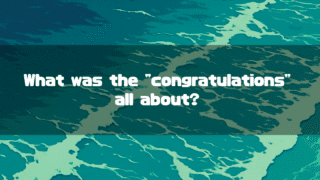
Neon Genesis Evangelion was also a story about people with serious problems. To depict “Gendo and Shinji’s reconciliation” or “Misato overcoming her father issues” at the end of that story would indeed be a huge lie.
However, Shinji achieving self-acceptance by saying “I’m allowed to be here”—while undoubtedly an incredible miracle brought about by Shinji as the protagonist—was, I believe, the creator’s spirit shown to the people who had followed the work (at least it’s better than “How disgusting,” right?).
Perhaps Director Miyazaki and Director Anno, in the same era, created works born from a similar awareness of problems and showed us a similar creative spirit.
The images used in this article are from Studio Ghibli Works Still Images.
About the Author
Recent Posts
- 2025-10-21
Indiana Jones and the Dial of Destiny(2023): Full Synopsis & Analysis: Indy’s True Motive and the Enigma of Helena - 2025-10-15
Indiana Jones and the Dial of Destiny(2023):Historical Background-WWII, the Real Dr. Schmidt, the Siege of Syracuse, and the Antikythera Mechanism - 2025-10-08
Why Does Children Who Chase Lost Voices Feel So Ghibli-esque? [Makoto Shinkai’s “Tale of Farewell”] - 2025-10-07
5 Centimeters per Second: Characters, Voice Actors, Character Analysis and Character Map - 2025-10-06
5 Centimeters per Second: Full Synopsis, Analysis, Ending Explained & Character Map (Spoilers)

